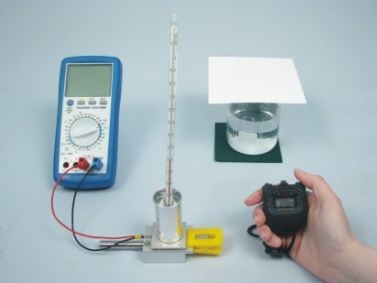setTimeout(function(){
window.print();
},500)

Technical data Thermal conductionArticle no: P9513100  Principle Energy can be transmitted through heat convection, heat radiation or heat conduction. The greater the thermal conductivity of a wall, the higher the temperature of its exterior. This property is used to compare the temperatures and thus the thermal conductivity of aluminum and glass with each other by means of the thermal generator. In order to compare an aluminum beaker with a glass beaker, hot water is poured into an aluminum beaker. In addition, hot water is available in another glass beaker. The temperatures at the bottom of these beakers are compared with each other by means of a thermal generator. The higher the displayed voltage, the higher the temperature. Benefits
Tasks
Learning objectives
Scope of delivery
| |||||||||||||||||||||
PHYWE Systeme GmbH & Co. KG
Robert-Bosch-Breite 10 – 37079 Göttingen – Germany
www.phywe.com
Robert-Bosch-Breite 10 – 37079 Göttingen – Germany
www.phywe.com

